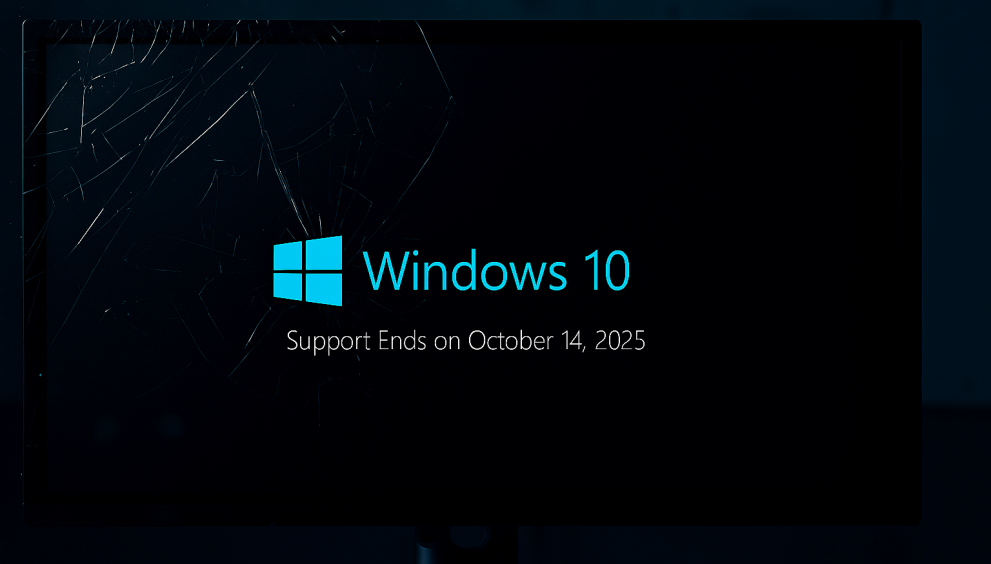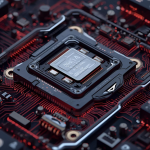As the end of support for Windows 10 approaches, users must understand what this means for their systems and how it could impact security. Microsoft’s official end-of-life date, after which security updates and system support will no longer be provided. This article will explore the implications of this expiry, how it can expose your PC to security risks, and the steps you should take to safeguard your data and system.
When is Windows 10’s End-of-Life Date?
Windows 10 has been a widely used operating system, but like all software, it has a lifecycle. Microsoft has announced that Windows 10’s end-of-life date will be October 14, 2025. This marks the point when Microsoft will stop providing security updates, bug fixes, and technical support for this version.
After Windows 10 support ending, users will no longer receive critical security patches, leaving systems vulnerable to cyber threats. The absence of updates post-Windows 10 EOL increases the risk of malware, ransomware, and other security issues. As Windows 10 end of life approaches, it’s crucial to plan for the upgrade to Windows 11 or install additional security measures to protect your system from potential threats once Microsoft ending support for Windows 10.
Why Windows 10 Expiry Puts Your PC at Risk
The cessation of Windows 10 support ending will no longer be updated with patches for vulnerabilities that cybercriminals exploit. As a result, the security of the system is compromised. Here are the potential risks:
1. Security Vulnerabilities After End of Support
One of the most concerning outcomes of Windows 10 expiration is the lack of security updates. After Windows 10 end of life, Microsoft will stop providing patches for vulnerabilities, leaving the operating system exposed to potential threats. Without timely updates, security flaws will remain unaddressed, making your PC a prime target for cybercriminals.
Hackers can exploit these vulnerabilities to spread malware, launch ransomware attacks, and carry out other malicious activities. As Windows 10 support ends, it becomes increasingly crucial to upgrade to a supported system or implement additional security measures to protect your data and privacy.
2. Limitations of Windows Defender Post-Expiry
Windows Defender, the built-in antivirus solution, is one of the first lines of defence. However, after Windows 10 EOL:
- It will no longer receive updates for new threats.
- The system’s ability to detect new types of malware may be compromised.
- There will be no improvement in its defensive measures, leaving systems increasingly vulnerable to evolving cyber threats.
3. Rise in Ransomware Attacks
As Windows 10 end-of-life approaches, ransomware attacks are likely to rise. Cybercriminals often target unpatched systems since they lack critical security updates, providing an easy entry point for malicious attacks. Once Windows 10 support ends, these systems become vulnerable to ransomware, which can lock files and demand ransom payments. Users with unsupported OS versions will experience a significant increase in exposure to these threats, making it crucial to upgrade to a supported version or secure the system with additional safeguards.
Why Antivirus is Essential After Windows 10 Support Ends
Given the growing risks, relying solely on Windows Defender after Windows 10 expiry is not enough. Installing a trusted antivirus solution is crucial to protecting your system.
The Role of Antivirus in an Unsupported OS
Once Windows 10 end of life, antivirus software like Quick Heal will fill the gap left by the lack of official Microsoft updates. Here’s why an antivirus solution becomes vital:
- Real-time threat detection: Antivirus solutions provide real-time threat detection, constantly monitoring for potential dangers. These tools identify and neutralise threats before they can cause harm, ensuring your system stays safe by catching malware and cyberattacks early, before they inflict damage.
- Ransomware protection: Advanced antivirus software includes robust ransomware protection to detect and block ransomware attacks. This feature safeguards your files and data by preventing unauthorised access or encryption, ensuring that cybercriminals cannot lock or hold your files hostage for ransom.
- Safe browsing: Secure browsing features in antivirus software protect you from harmful websites and downloads. By blocking dangerous links and preventing risky downloads, these tools help maintain your system’s security while browsing, reducing the chances of infection from online threats.
Why Choose Quick Heal for Windows 10 Security
Quick Heal provides comprehensive protection even after Windows 10 support ending features include:
- Advanced ransomware protection that secures your files.
- Web security that blocks malicious websites.
- Real-time detection of evolving threats that would otherwise bypass outdated Windows Defender.
Real-World Protection Beyond Windows Updates
Even after Windows 10 support ending, Quick Heal Total Security continues to offer updated protection, safeguarding systems that are no longer receiving support from Microsoft. It acts as a crucial layer of defence for users who have not upgraded to Windows 11 or installed any other protective measures.
How Windows 11 System Requirements Affect Users
The end of support for Windows 10 might push some users to consider upgrading to Windows 11:
- Windows 10 EOL is approaching, prompting many users to consider upgrading to Windows 11.
- Windows 11 system requirements are higher than those of Windows 10, meaning older PCs may not be compatible with the new OS.
- Users with outdated hardware may be unable to upgrade, leaving their systems at risk after Windows 10 end of life.
- If your system doesn’t meet the minimum requirements, you will have to continue using an unsupported version of Windows.
- Using an unsupported OS after Windows 10 support ending increases vulnerability to cyberattacks and security breaches.
How to Stay Secure After Windows 10 Expiry
For users who cannot upgrade to Windows 11, there are still several steps to ensure continued security after Windows 10 end of life:
1. Upgrade to Windows 11
Upgrading to Windows 11 ensures continued security updates and features after Windows 10 EOL. This upgrade offers better protection, performance, and compatibility with modern hardware. It helps safeguard your system against vulnerabilities once Windows 10 end of life occurs and Windows 10 support ending leaves your PC without security patches. Transitioning to Windows 11 ensures your PC remains secure, updated, and future-proofed.
2. Install a Trusted Antivirus
A trusted antivirus like Quick Heal is crucial after Windows 10 EOL. It provides real-time threat detection, ransomware protection, and secure browsing when Windows 10 end of life arrives. As Windows 10 support ending means no more security patches, an effective antivirus can prevent cyberattacks and keep your system protected from emerging threats. Quick Heal ensures your PC stays safe by compensating for the lack of official updates.
3. Keep Applications and Drivers Updated
Regularly updating applications and drivers is key to maintaining security after Windows 10 EOL. As Windows 10 support ending means no further updates from Microsoft, outdated software becomes a prime target for cyberattacks. By keeping all apps and system drivers up to date, you reduce vulnerabilities and minimize risks. This proactive measure ensures your system remains secure even when Windows 10 end of life leads to the discontinuation of official patches.
Frequently Asked Questions
-
Will Quick Heal continue to work after Windows 10 support ends?
Yes, Quick Heal will continue to provide real-time threat detection and regular virus definition updates for systems running Windows 10 after support ends.
-
Do I need to upgrade my antivirus after Windows 10 expiry?
No, your antivirus will continue to provide up-to-date protection. However, it is crucial to ensure your antivirus software is always updated to keep pace with evolving threats.
-
What will happen to my PC when Windows 10 expires?
When Windows 10 reaches its expiration date, it will no longer receive security updates or technical support. Your system may become vulnerable to cyber threats, such as malware and ransomware, as security patches will no longer be available.
-
What if my PC doesn't meet the Windows 11 requirements?
If your PC doesn't meet the Windows 11 system requirements, you'll be unable to upgrade. In this case, you'll continue using Windows 10, but without security updates post-expiry, which leaves your system exposed to potential security risks.
-
Can I still use Windows Defender after Windows 10 support ends?
After Windows 10 support ends, Windows Defender will still function but without new updates or security definitions. This makes your system vulnerable to new threats as Windows Defender won’t receive the necessary updates to combat evolving cyber risks.
-
Why is it important to upgrade after Windows 10 expiry?
Upgrading to Windows 11 is crucial after Windows 10 expires because it ensures continued security updates and better performance. It also supports new hardware, provides advanced features, and minimizes the risk of cyber threats that target unsupported systems.



